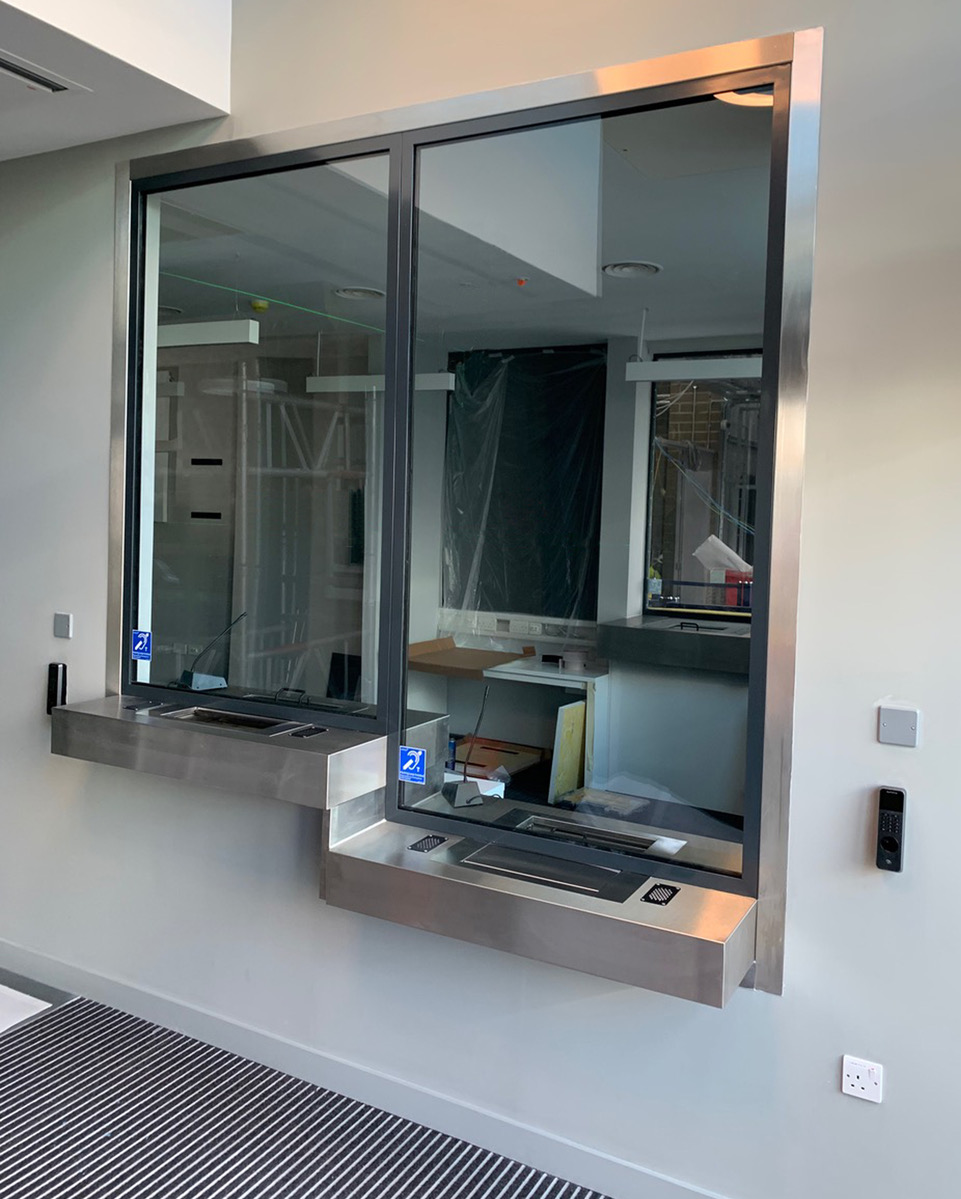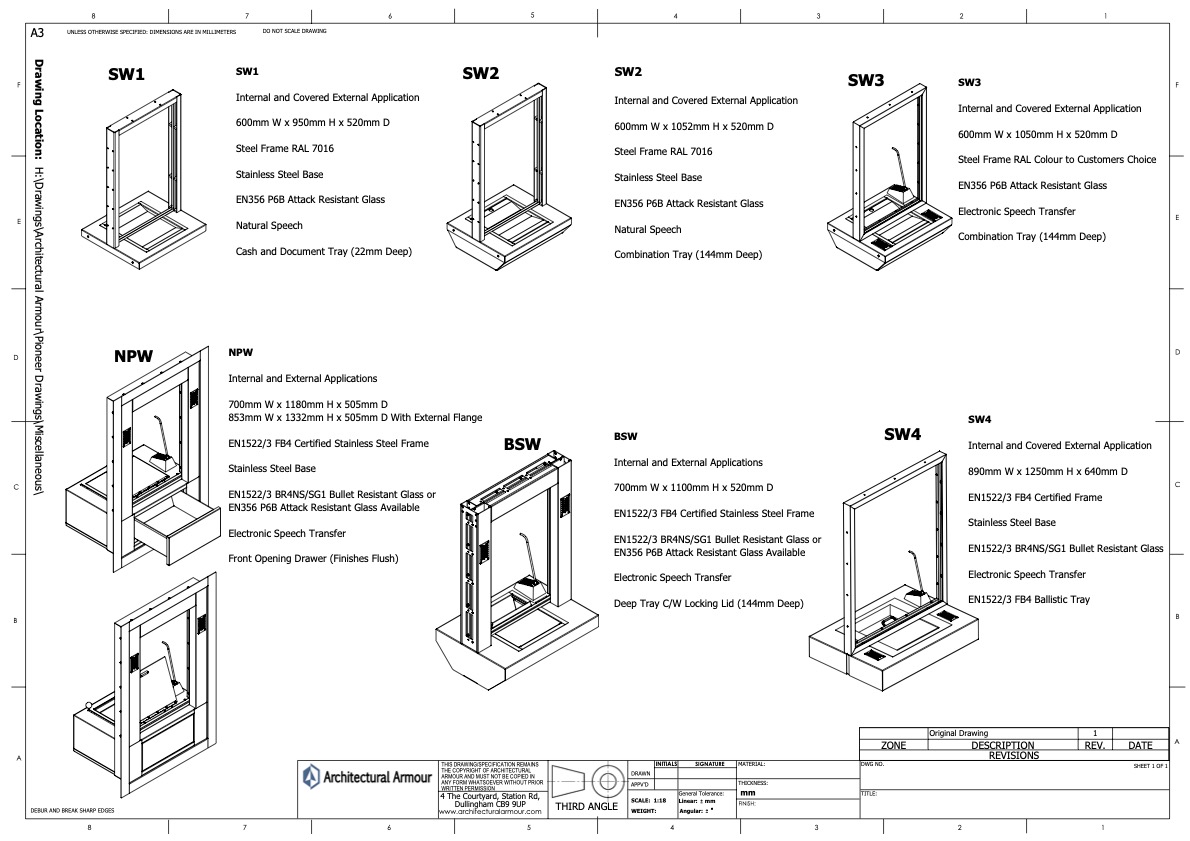BS 476 Part 22
Fire tests on building materials and structures —
Part 22: Methods for determination of the fire resistance of non-load bearing elements of construction
This standard has been superseded by the current BS EN 1634-1, but it has been in conjunction with BS 476-20 which describes the general principles for these retained based on legitimate need for the standards within non-EU markets.
Scope
This Part of BS 476 describes procedures for determining the fire resistance of non-load bearing elements of building construction when subjected to the heating and pressure conditions specified in BS 476-20.
Carry out the test in accordance with BS 476-20 and make any observations on the behaviour of the specimen, including the mode of failure in the event of collapse.
The result shall be stated in terms of the elapsed time to the nearest minute, between the commencement of heating and the time of failure
Samples shall be tested from both sides, i.e. two specimens
If testing is carried out from one side only, i.e. one specimen, the reason for this shall be clearly stated in the report.
Determination of the fire resistance of glazed elements
Integrity. Monitor the unexposed face of the specimen for evaluation of the integrity in accordance with clause 9 of BS 476-20:1987.
Insulation. Measure the temperature rise of the unexposed face for evaluation of the insulation in accordance with clause 9 of BS 476-20:1987 for both the mean temperature rise and the maximum temperature rise.
Lateral deflection. Whilst the specimen is not evaluated with respect to either the rate or extent of lateral deflection, monitor the glazing for deflection.
Irradiance. Monitor the irradiance of the specimen by means of the radiometer in accordance with BS 476-20.
Products
Architectural Armour offer a range of attack & bullet resistant glass.
Please See Our Fire Resistant Glass
Determination of the fire resistance of partitions
Vertical glazed separating elements, partitions with less than 50 % glazing will be tested as partitions.
Integrity. Monitor the unexposed face of the specimen for evaluation of the integrity in accordance with clause 9 of BS 476-20:1987.
Insulation. Measure the temperature rise of the unexposed face for evaluation of the insulation in accordance with clause 9 of BS 476-20:1987 for both the mean temperature rise and the maximum temperature rise.
Deflection. Monitor the maximum deflection of the specimen.
Irradiance. Monitor the irradiance of the unexposed face.
Products
Architectural Armour offer their clients bespoke systems.
Please See Our Case Study on International School
Determination of the fire resistance of fully insulated door-sets and shutter assemblies
Integrity. Monitor the temperature rise of the fixed frame components of the door or shutter assembly.
Insulation. Measure the temperature rise of the unexposed face for evaluation of insulation in accordance with clause 9 of BS 476-20:1987, for both the mean temperature rise and the maximum temperature rise.
Monitor the temperature rise of the fixed frame components of the door or shutter assembly.
Lateral deflection. Monitor the lateral deflection of the specimen.
Determination of the fire resistance of partially insulated door-sets and shutter assemblies
Integrity. Until the criteria for insulation failure occurs, monitor the unexposed face of the specimen for evaluation of integrity in accordance with clause 9 of BS 476-20:1987.
Insulation. Measure the temperature rise of the unexposed face for evaluation of insulation in accordance with clause 9 of BS 476-20:1987, for both the mean temperature rise and the maximum temperature rise
Monitor the temperature rise of the fixed frame components of the door or shutter assembly
Lateral deflection. Monitor the lateral deflection of the specimen.
Irradiance. Monitor the irradiance by means of the radiometer described in BS 476-20
Determination of the fire resistance of uninsulated door-sets and shutter assemblies
Integrity. Monitor the unexposed face of the specimen for evaluation of integrity in accordance with clause 9 of BS 476-20:1987.
Insulation. Monitor the temperature rise of the unexposed face in accordance with clause 9 of BS 476-20:1987, for both the mean temperature rise and the maximum temperature rise.
Monitor the temperature rise of the fixed frame components of the door or shutter assembly.
Lateral deflection. Monitor the lateral deflection of the specimen.
Irradiance. Monitor the irradiance by means of the radiometer described in BS 476-20.
Products
Architectural Armour offer a range of Door Specifications.
Please See Our Fire Resistant Doors
For our full range of technical specifications please click on relevant headings below
Ballistic Technical Specifications
EN1063 Glass in Building - Security Glazing - Testing and Classification of Resistance Against Bullet Attack
UL752 Standard for Bullet-Resisting Equipment
BS5051 Bullet-resistant glazing - Part 1: for interior use- Part 2: for Exterior use
NIJ 0108.01 US National Institute of Justice Standard-Test and Certification for Ballistic Resistant Materials
EN1522/3 Windows, doors, shutters and blinds - Bullet resistance - Requirements and classification /Test method
Blast Specifications
GSA-TS01:2003 Standard Test Method for Glazing and Window Systems Subject to Dynamic Overpressure Loadings
EN 13541 Glass in building - Security glazing - Testing and classification of resistance against explosion pressure
EN 13123-2 Windows, doors and shutters - Explosion resistance - Requirements and classification
ISO 16933:2007 Glass in Building -- Explosion-Resistant Security Glazing -- Test & Classification for Arena Air-Blast Loading
Fire Specifications
UL 10C Positive Fire Pressure Tests of Door Assemblies
EN 1363-1 Fire resistance tests –Part 1: General Requirements
EN 1364-1 Fire resistance tests for non-load-bearing elements – Part 1: Walls
EN 1634-1 Fire resistance and smoke control tests for door and shutter assemblies, openable windows and elements of building hardware
Manual Attack Specifications
EN 1627 Pedestrian door-sets, windows, curtain walling, grilles and shutters - Burglar resistance - Requirements and classification
LPS 1270 Intruder Resistant Security Glazing - Requirements & Testing Procedures
LPS 1175 Requirements and testing procedures for the LPCB certification and listing of intruder resistant building components, strongpoints, security enclosures and free-standing barriers
EN 356 Glass in building - Security glazing - Testing and classification of resistance against manual attack.
LPS 1175 and 1270 Tool Categories Testing procedures for the LPCB approval
This is an extract not a full report and Architectural Armour Ltd accepts no liability for any loss, direct, indirect or consequential damage incurred by using this information, to the fullest extent permitted by law. You should make your own judgement as regards use of this document and seek out the full test standards.
Latest News
Split Height Transaction Window Duo
Using experience on previous projects and customers requirements we have designed a split height transaction window offering standing and DDA access to reception and data centre environments.

For more information and pricing please contact our office on info@architecturalarmour.com or +44(0)1981 257000
Read more
Increased Stock for Express Delivery
We have increased our range of stock transaction windows to six units , ready for express dispatch.
Our range of transaction windows include, physical attack resistant and bullet resistant internal and external models. Please see below an outline of our products.
Architectural Armour are offering standard stock items and bespoke orders to suit. Please contact us on +44(0) 1981 257000
Read more

